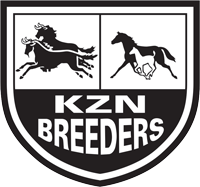| Well Bred 22 February, 2012 – Lisa Barrett |

The question on most breeders’ minds is how to maximize profits for minimal outlay.
Our relationship with horses is an ancient but tricky one. According research it is generally accepted that horses evolved about 40-55 million years ago from a small dog-like creature, Eohippus (dawn horse) averaging approximately 60cm in length, and weighing about 16 kgs. About 3000 BC humans began to domesticate horses, and breed them according to form and function. Once this process had begun, all sorts of combinations popped out.
Breeders have been raising racehorses for centuries and yet still they struggle to get the mix just right. One can spend thousands, sometimes even more, on fancy computer models and programmes that look at in-breeding and pedigree duplications and which work out possibilities from that. Yet, at the end of the day, the outcome is not ensured.
Many people though prefer the old fashioned way of doing it, the one popularized by Australian Bruce Lowe, who in 1895 wrote a book called “Breeding Racehorses by the figure system” in which he theorized the most effective way to breed a good racehorse was to do so through the dam line. At the time it was considered revolutionary and quite controversial. More than a hundred years later, in 2002 at Trinity College in Dublin Ireland, Dr Emmeline Hill and her colleagues from the Department of Genetics undertook a groundbreaking study which changed the way people looked at thoroughbreds and breeding in general.
Their research revolved around mitochondrial DNA which is received from the mare (or dam) and which allows the tracing of a direct genetic line of maternal descent. Unlike chromosomal genes, mitochondrial DNA is transmitted as a unit, so it doesn’t rely on probabilities or assessments to determine whether it’s reliable or not. This therefore leads to a greater chance of accuracy in the findings and overall conclusions. The study sampled the DNA of 100 horses, and Hill was able to trace their lines back to the 1700’s.They came to some startling conclusions, namely that General Stud Book, or (GSB) had many of its pedigree lines wrong. What’s even more interesting, is that this has persisted into modern times, with incorrect record keeping, which persists even to this day.
In 2006 Stephen Paul Harrison (Thoroughbred Genetics Ltd., Kent Science Park, Sittingbourne, Kent) and Juan Luis Turrion-Gomez (Departament of Microbiology and Genetics, University of Salamanca Spain) undertook an extensive study titled: Mitochondrial DNA: An important female contribution to thoroughbred racehorse performance.
Harrison and Turrion-Gomez admitted that there is no formal or established method of anatomical or pre-competitive performance assessment for thoroughbred racehorse, however they believed that the traditional method of breeding seems to favour the dam line rather than the sires to breed racing ability into the horse.
Their study continued by stating “The multi-factorial nature of the inheritance of racing ability is an obvious complicating factor. However, mitochondrial gene variation may represent a measurable component contributing to performance variability”. They believe that naturally, dated pedigree-based comparisons describing family origins and performance characteristics do not take into account shared maternal genetic origins prior to formal studbook recordings (Weatherby and Sons, 1791) and overlook potential common genotype-mediated performance characteristics.
In the end, they come to the same conclusion as Dr Hill and many others have over the years. According to Harrison and Turrion-Gomez; “Over 50% of the 3 year old thoroughbred population belong to mitochondrial haplotypes (a combination of DNA sequences at adjacent locations on the chromosome) that exhibit a significant leaning towards success at particular stamina extremes. These observations lend support to there being an important female component contributing to stamina optima which should be taken into account when planning thoroughbred breeding strategies”.
In the end though, it boils down to the fact that those breeders that have the money to mate their mares to a high class stallion, base their decision on the assumption that the resultant progeny will be successful either at the track or in the covering shed. Yes, they do consider the many variables, but its a bit like playing slot machines, you never quite know if you are going to get lucky or not. Even despite the best genetics and breeding, sometimes it’s the luck of the draw that determines the destiny and success of a racehorse.
| Lisa Barrett – Guest Writer “Lisa Barrett”, her psuedonym, currently works at a stud farm in the KZN Midlands – a position she has held for the past eight years. She describes herself as “absolutely and totally besotted by horses” and she is in a fortunate position to work with a stallion she idolises every day. She describes herself as “continually fascinated by every aspect of the racehorse business, especially pedigrees!” |

